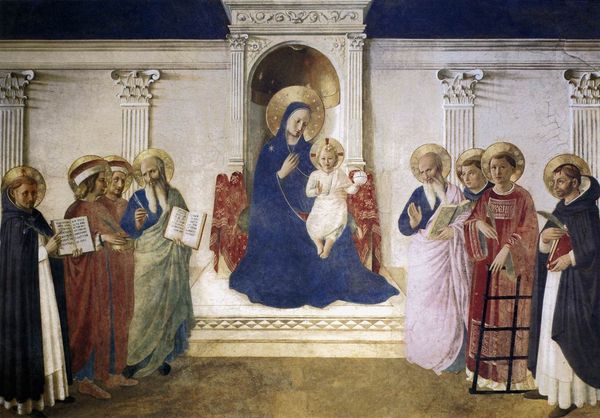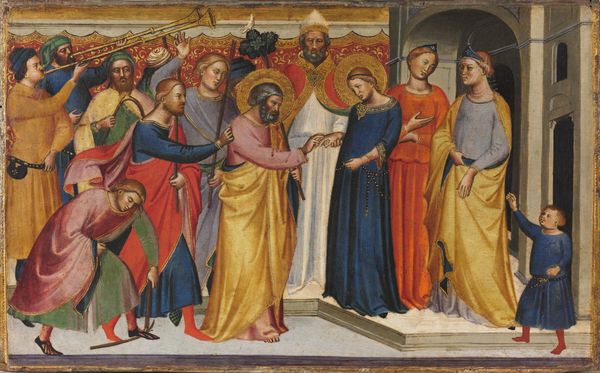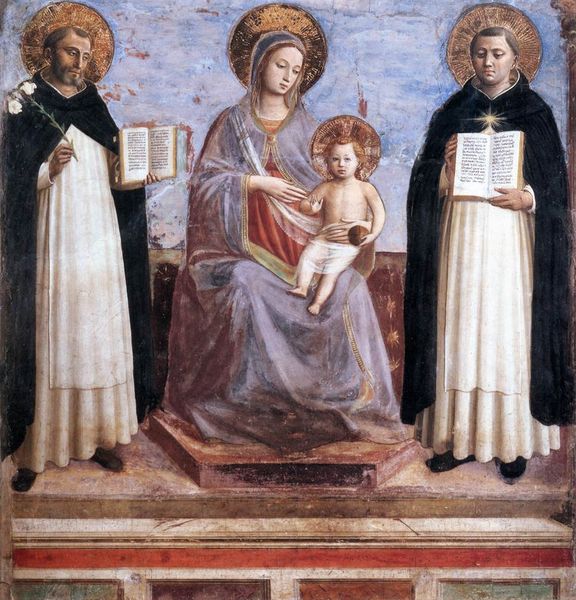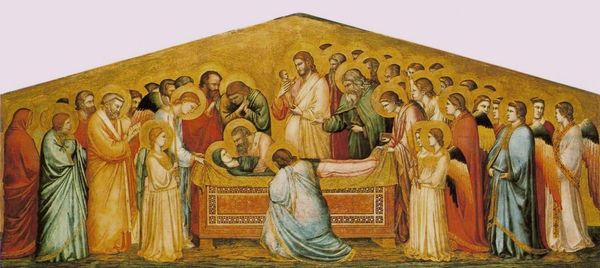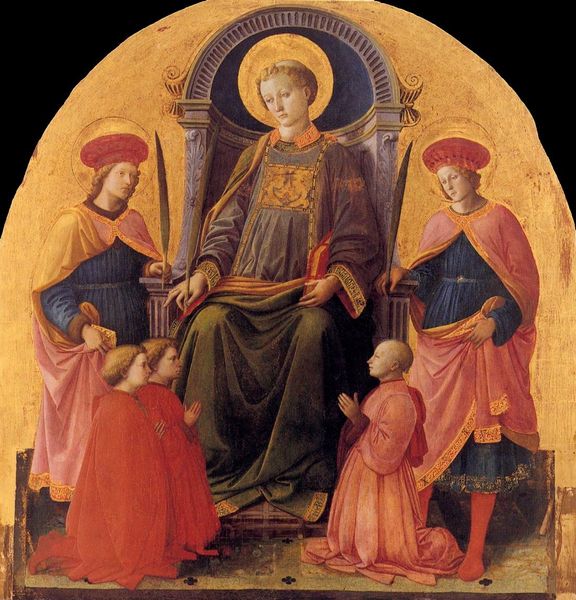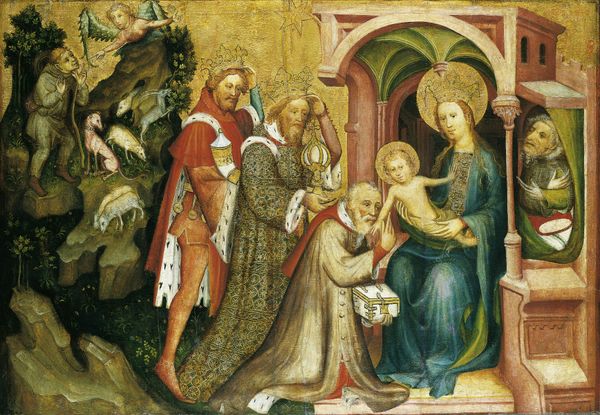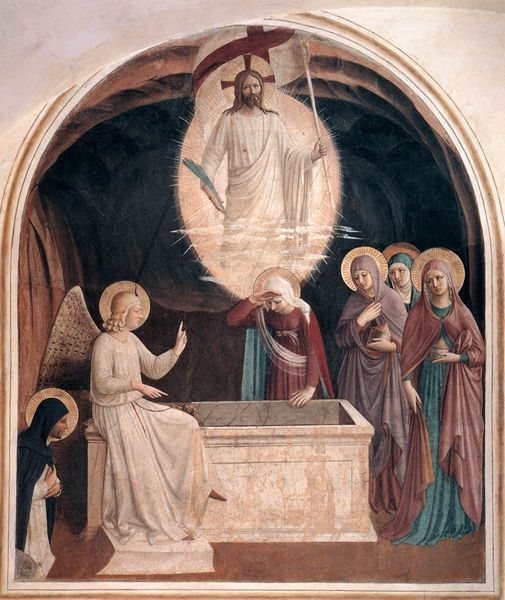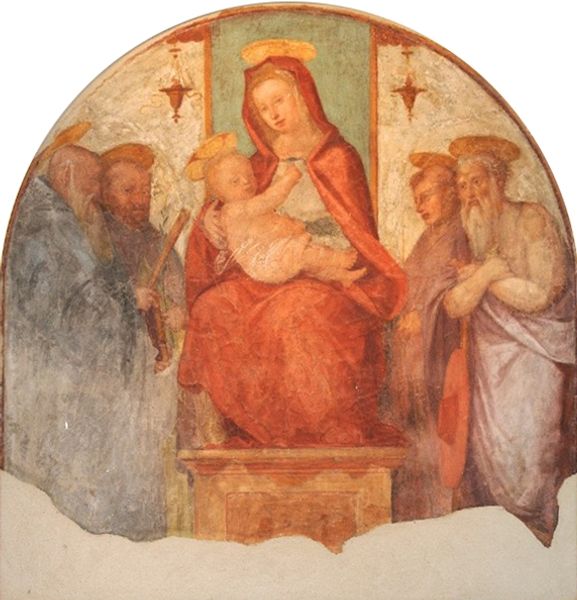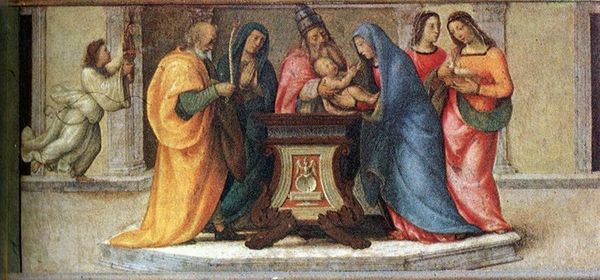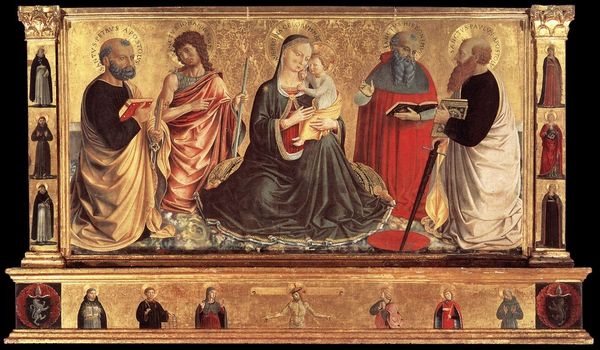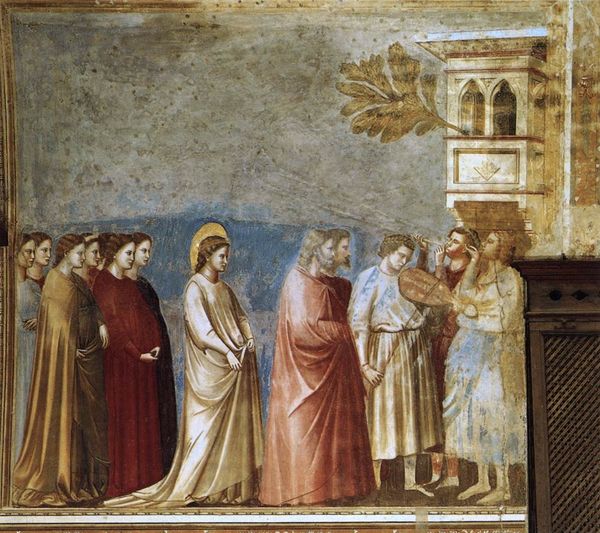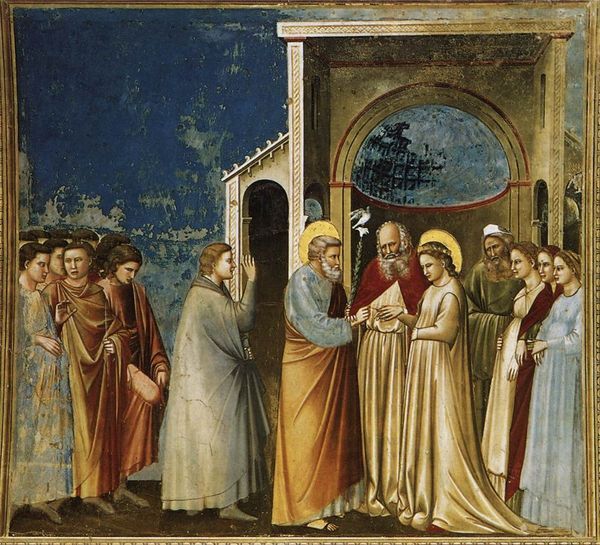
tempera, painting, oil-paint, fresco
#
portrait
#
high-renaissance
#
narrative-art
#
tempera
#
painting
#
oil-paint
#
sculpture
#
fresco
#
oil painting
#
child
#
christianity
#
painting painterly
#
italian-renaissance
#
virgin-mary
#
christ
Copyright: Public domain
Curator: What strikes me first about this particular detail, Maria Lactans, of the Tabernacle of the Madonna delle Tosse by Benozzo Gozzoli, from 1484, is the incredible weight of expectation pressing down on Mary, positioned as she is between saints and historical figures within a theological narrative. Editor: It's wild how intensely the figures are crammed together; I almost feel claustrophobic! The Madonna's dress seems ready to swallow her up entirely; it overwhelms the image, visually. And, look, I know she is the central figure, but isn’t she just completely vacant of emotion? Is it intentional, or did Gozzoli just lack the ability to paint a more emotionally accessible character? Curator: It's critical to remember the Madonna's role within the context of the late 15th century. Motherhood, virginity, divinity… she becomes a nexus of so much societal projection. That impassivity becomes almost… strategic. Note that her blank look grants authority, projecting an untouchable ideal of Christian femininity. Gozzoli, working within the High Renaissance, skillfully navigates that tightrope. Editor: Strategically vacant… huh. Okay, I get it. Looking at the composition from that angle, there's this strange echo of serenity that contrasts with that tight packing. Those light blue accents almost bring the whole artwork together in one single movement, while all of those gold halos reinforce this aura of... holiness? I hate to use the word because of its cultural weight, but I'm unsure how else to name the picture's overarching mood. Curator: Exactly. The halos work on multiple levels. Yes, to denote sanctity, but also to reinforce a visual hierarchy. The linear perspective and the placement of figures serve a very specific theological agenda, centering divine femininity as crucial to salvation and legitimizing contemporary social hierarchies through religious doctrine. Editor: Ah, agendas lurking in the fine arts—who would've thought? And the Baby Jesus looks completely disengaged with what is happening. Look, he has been put there, literally! Even if I find this a tiny bit depressing, there’s still a crazy beauty at work with the Renaissance masters' blending of social message with pure skill. Curator: It's precisely that tension—the beautiful concealing, and at times revealing, the ideological frameworks—that makes this detail so incredibly compelling for critical study today. Editor: Absolutely! I might even frame it in my dining room just to stir up a casual theological debate during dinner parties. Who wouldn’t love to have Baby Jesus presiding over their culinary escapades?
Comments
No comments
Be the first to comment and join the conversation on the ultimate creative platform.
